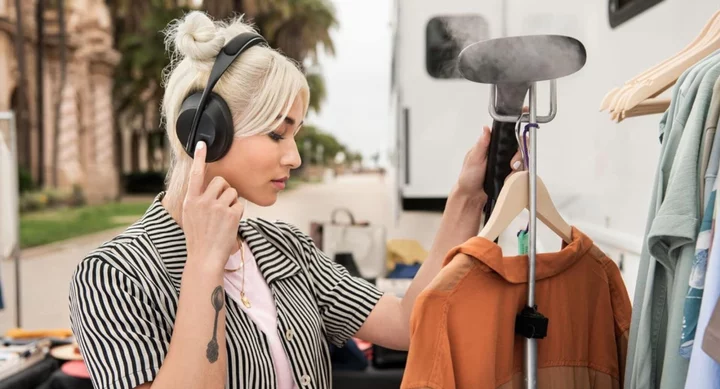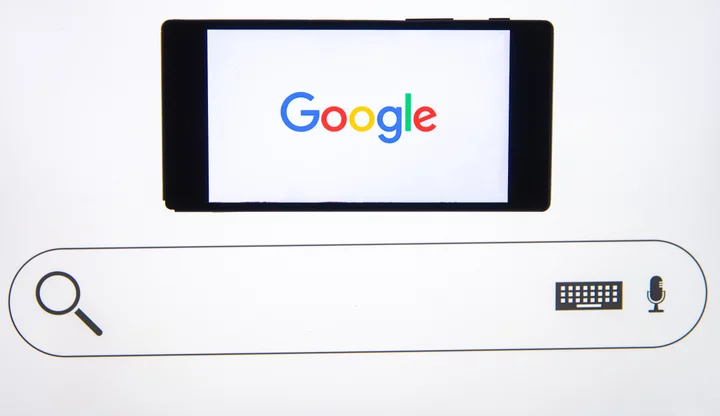From the TikTok feeds that brought you girl dinner comes girl math: a strategy for justifying large or unnecessary purchases.
The calculations behind girl math aren't new, but the way we talk about those calculations — by rooting them in the collective experience of being a woman and the thrill of allowing yourself a treat or splurge — is. And while some write-ups of the TikTok trend have shamed it as enabling overspending, girl math is just not that serious.
SEE ALSO: Gorgeous, gorgeous girls take over TikTokSo how do you do girl math? And does the trend trivialize poor money habits? We break it all down.
How to do girl math
Some girl math is just silly (anything under $5 is free or dresses are 50 percent off because they take the place of both a shirt and pants), but most girl math uses a combination of three economic principles: cost-per-wear, sunk cost, and prospective cost.
Say you want to girl math a dress you bought for $330. Start by rounding that figure down to $300 (girl math!). Then divide $300 by how many times you'll wear the dress — let's say four times — which gives you a cost-per-wear of $75 (girl math!). Swap it with a friend, which basically means you get a new dress for free (girl math!). When your friend returns the dress to you, resell the dress online for $75 and you've made money on it (girl math!)
This is an actual example of girl math that economist Brad Olsen evaluated on the New Zealand radio show Fletch, Vaughan & Hayley. His conclusion? "Girl math is OK here," he told the hosts. "The important thing here is that if it was a one-off, a one-and-done purchase, I'd be concerned. But everyone's now thinking like an economist… 'Where's the economies of scale? How do I get the most bang for [the] buck here,' and I like that thinking."
Most girl math is a combination of the following three economic principles:
Cost-per-wear
Definition: The cost of an item divided by how often it is used. The lower the cost-per-wear, the more thrifty the purchase.
Girl math examples: A tote bag takes the place of multiple bags: a carry-on, a beach bag, a work bag, etc. Divide the price of the tote by the number of bags it replaces and/or the number of times you will use it.
Sunk cost
Definition: Money that's been spent and cannot be recovered. Basically: if it's left my account, I've spent it.
Girl math examples: I buy a $58 top. If I return that item, whatever I buy with that $58 is free.
Prospective cost
Definition: Future costs that may be avoided if action is taken now.
Girl math examples: If a coat I want is 65 percent off during the summer, buying it means I avoid the future cost of waiting until the winter, when it'll be back to full price.
The joy of girl math
At its core, girl math is a send-up of the patriarchal stereotype that women don't understand how money works or can't be trusted with it. Most girl math-ers know the strategy is silly as hell, and that's kind of the point.
"It's a lifestyle and it's a delusion," says Shannon Trim of the trend in a TikTok video. She's a producer on Fletch, Vaughan & Hayley, the same show that had Olsen analyze its girl math. Over the past month, the program has developed a regular segment dedicated to helping listeners "girl math" their way through justifying an expensive purchase.
SEE ALSO: How 'Barbie' became the American monoculture of the momentWhile the male hosts hold their heads in their hands, the female hosts and producers gleefully explain why $400 hair extensions are worth it (because you won't look at your wedding photos with such regret that you feel compelled to recreate your wedding for $40,000… so spending $400 now is actually saving you money. Girl math!)
On TikTok, women have posted videos of their male partners failing to understand the logic, too. And that's fine because we don't really need them to get it. Girl math is not for them, it's for us.
A list of Dani's "girl math" rules. Credit: Dani (@healthbydaniela) on TikTok A list of Alyssa Davies' "girl math" rules. Credit: Alyssa Davies (@mixedupmoney) on TikTokWhen does "girl math" become an actual problem?
Though "girl math" videos are meant to poke fun at the way we spend money, they can, of course, reinforce misogynistic stereotypes when consumed without proper context.
The recent rise of "buy now, pay later" companies, for example, has made it easier for overspending to seem financially savvy. In the same way, girl math can be seen as a stamp of approval on accruing long-term debt in exchange for short-term satisfaction.
Girl math can also downplay the prevalence of the pink tax or the societal pressure for women to spend discretionary income on upgrading their clothing and cosmetics.
For the most part, though, girl math is just a fun way for women to talk to each other about how they spend money.
Men have their finance bros, who are annoyingly serious about their soulless "grinds." Let the girl math-ers math.









